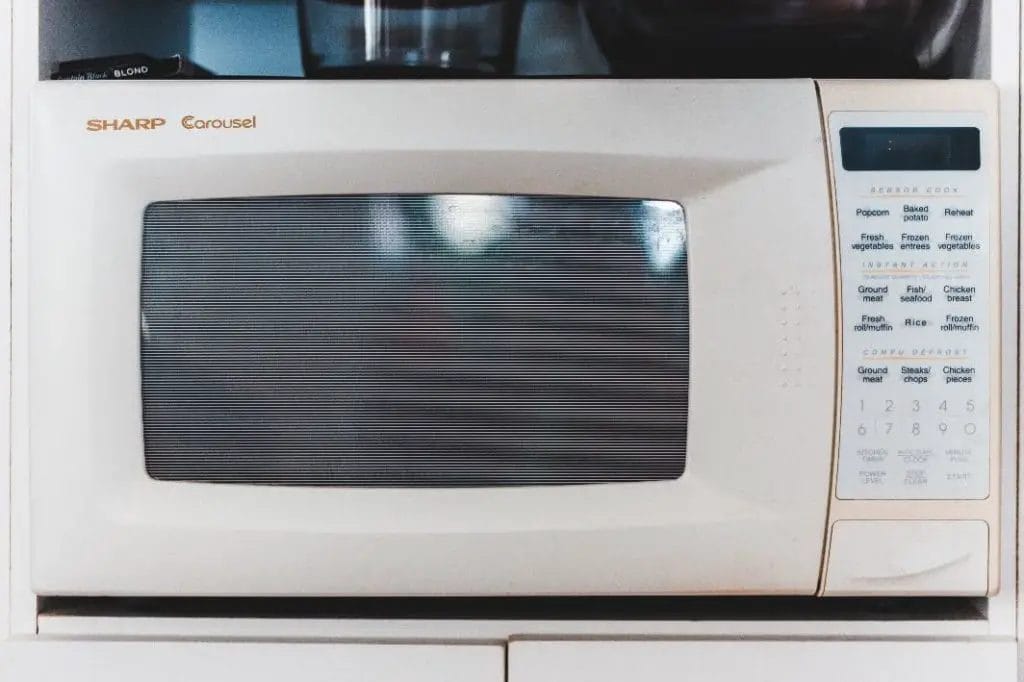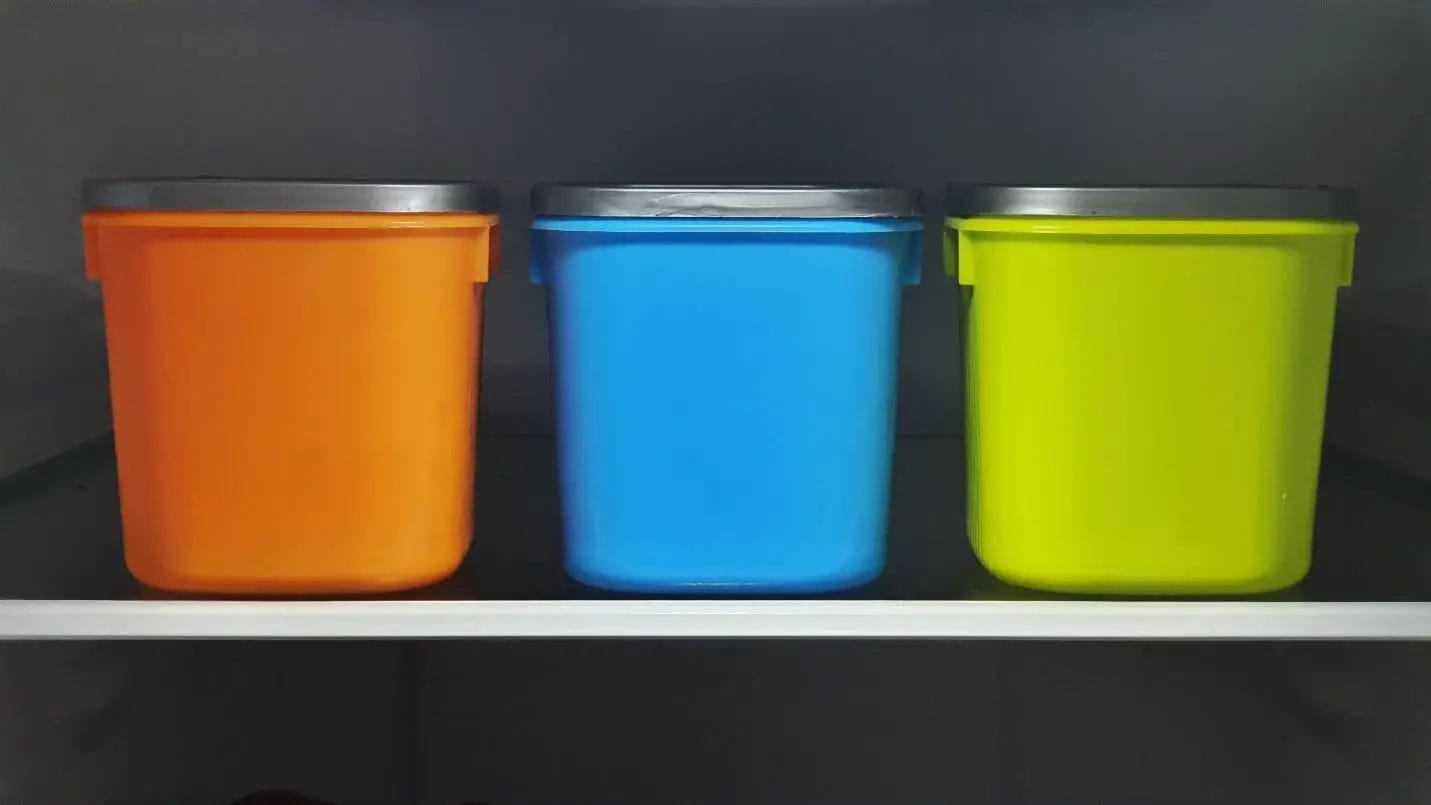Plastic containers are a convenient storage solution for foods. They’re not like metal pots nor fragile like glass containers. They’re lightweight, durable, and flexible, making them perfect for storing different types of food. Who hasn’t tossed a plastic Tupperware of cold lasagne into the microwave before? Although microwaving food in plastic containers is pretty standard, is it actually safe?
Here’s the short answer: it’s not safe at all. Let’s look at their properties and discuss the health effects of microwaving plastics.
Types of Plastics
Plastics are composed of long chains of polymers containing thousands of repeat units called monomers. They’re typically made using various hydrocarbons extracted from oil and natural gas, but renewable materials like wood pulp can also be used to make plastics.
Recyclable plastic products are made using one of seven different types of plastics. These types include the following:
- Low-Density Polyethylene (LDPE): used to make plastic bags and food packaging.
- High-Density Polyethylene (HDPE): used to make hand soap, sanitizer, detergent containers, butter containers, protein power boxes, and milk jugs.
- Polystyrene/ Styrofoam: used in making disposable food containers.
- Polyvinyl Chloride (PVC): is used to make plumbing pipes, shower curtains, and electrical wiring.
- Polyethylene Terephthalate (PET): used to make soda bottles, cooking oil containers, and mayonnaise jars.
- Polypropylene: used to make yogurt containers, food storage containers, bottle caps, baby bottles, and coffee pods.
- Other: includes plastics like polylactide, nylon, fiberglass, styrene, and polycarbonate.
Additives are used to manipulate the properties of these plastics – some of which are harmful and can leach into food and drinks. Bisphenol A (BPA) or phthalates are the most concerning as they are readily used in plastic products to increase their durability and flexibility. However, these chemicals can disrupt the body’s hormone levels and have been linked to several concerning health effects.
BPA, in particular, leaches into food from the plastic when exposed to heat, such as when foods in plastic containers are microwaved. While the FDA has taken action against using the chemical, BPA-free plastics are not any safer. Their alternative has also been linked to hormone disruptions and adverse health effects.
Health Effects of Microwaving Plastics
Leaching occurs when plastics are exposed to high temperatures, which cause them to break down at the molecular level. If you see warps, cracks, or deformities in your plastic containers, there’s a high chance you’re consuming foods riddled with leached chemicals. BPA is not the only chemical that can enter your foods this way.
Phthalates leach out when BPA-free containers heat up, causing the plastic to break down. The CDC has found these chemicals to negatively affect animals’ reproductive systems, although their exact effects on human health are unclear.
Additionally, microwaving food in plastic containers is not the only way leaching occurs. Putting hot food in containers and broken, damaged, scratched, and wrinkled plastic containers can also cause chemical additives to leach out.
Consequently, exposure to these chemicals for long periods spells disaster for the body. BPA has been the subject of many research studies that have tied it to health issues in children. Let’s look at some of the health effects of microwaving plastics and chemical leaching:

Hormonal Disruption
The body’s endocrine system is sensitive to external stimuli and environmental factors. Our dietary and lifestyle habits also affect the system. When chemicals leach into food and enter the body, especially bisphenol and its alternatives, they have the potential to act as endocrine disruptors. As the body’s endocrine system is disrupted, hormone production can be inhibited, downregulated, or upregulated; this has far-reaching consequences that can affect fertility, growth patterns, puberty, and even tumor progression.
Many cancers develop due to unchecked hormone disruption, which affects numerous cellular processes within the body, many of which keep cancerous cellular growth in check. BPA can mimic estrogen and similar hormones in the body, which leads to the endocrine system downregulating their production. A lack of these essential hormones leads to changes in cell behavior, and research studies have linked this to cancer development.
Diseases
Exposure to BPA, BPA-like compounds and alternative chemical additives in plastic containers is also associated with diseases and conditions like:
- Obesity
- Type 2 Diabetes
- Heart Disease
Overexposure in already-affected people can aggravate symptoms and cause further complications. Although many of us regularly microwave plastic Tupperware, it’s better to steer clear of plastics because the risk is not worth it.
Learning, Mood, and Behaviour Disorders
Hormone disruption can also affect thinking patterns, learning, and neurological disorders. The Columbia Center for Children’s Environmental Health highlights BPA as the main culprit. Exposure to the chemical additive increases the risk of various behavioral, learning, and mood disorders, especially in children since their brains are still developing.
These disorders include severe conditions, such as:
- Anxiety
- Learning and Behavior Disorders (ADHD, ADD, ODD, ASD)
- Depression
Some of these conditions like anxiety and depression may also affect mental health, leading to the development of more mental health issues. This is of primary concern in growing children whose brains have yet to mature since learning disabilities can cause issues affecting academic and athletic performance.
Final Verdict
Everything that we’ve said so far does not praise plastic use in any way. Although microwaving food in plastic containers is common, it’s neither safe nor healthy for your body. If you need to use plastic containers and have no alternative, stick to BPA-free alternatives to limit health issues. However, alternatives are not free from leaching issues either.
Consequently, it’s better to use alternative materials like glass and ceramic containers. These highly thermostable materials can withstand extreme temperatures without breaking down or deforming. They don’t have any dangerous chemicals and additives that can leach into your food and drinks.
Furthermore, glass and ceramic containers have a non-porous surface that doesn’t allow fluids to flow through them. However, it would help if you keep an eye out for containers with a plastic coating, as they are not microwave-safe and can cause health concerns.
We hope you found this article informative and learned more about safe microwave practices. While you can undoubtedly microwave particular plastic containers, it is believed to be an unhealthy practice. Try using the alternative we’ve mentioned and adopt a healthier lifestyle!








